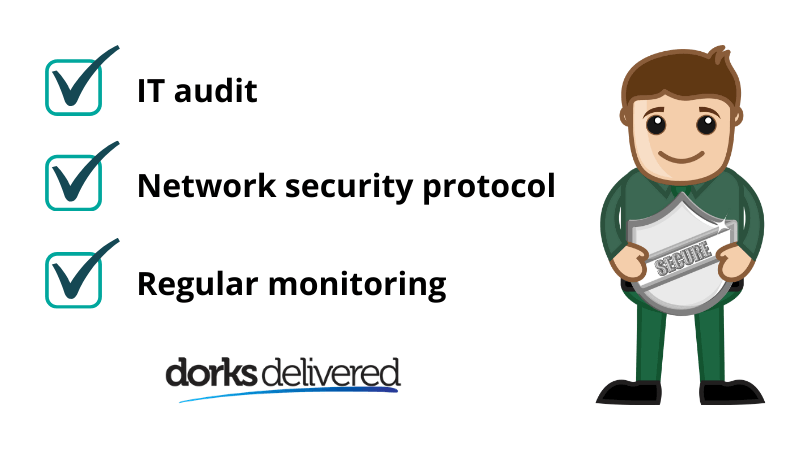What Is Digital Transformation and How to Implement It
Modern business is super reliant on digitisation. Gone are the days when computers were frowned upon and looked on as a lazy man’s way of completing work. Today there is a massive focus on how fast and how accurately a job can be performed with minimum human intervention. The idea is not to take away the jobs, but to increase the pace of production and expand the scope of activities. Digital transformation is a blessing!
Defining Digital Transformation
If you want to know the simplest definition of digital transformation, it is the incorporation of digital technology in all the areas of business. If you look in the core of the matter, digital transformation brings about a fundamental change in how the business operates and delivers value to the customers. In a nutshell, a business moves away from the traditional processes and embraces technology-aided processes.
Must Know About Digital Transformation
 In a world that is driven by technology digital transformation is the most obvious choice. It can be an expensive and risky undertaking. Since it is a procedure that directly affects your business, bear in mind that it can disrupt the way you work. This can happen if adjustments are not made from the end-users as well as the technology team who are in charge of the development and implementation of the digitisation process. For successful digital transformation, it is necessary for organisations to understand the expectation and to execute the change over effectively and efficiently.
In a world that is driven by technology digital transformation is the most obvious choice. It can be an expensive and risky undertaking. Since it is a procedure that directly affects your business, bear in mind that it can disrupt the way you work. This can happen if adjustments are not made from the end-users as well as the technology team who are in charge of the development and implementation of the digitisation process. For successful digital transformation, it is necessary for organisations to understand the expectation and to execute the change over effectively and efficiently.
If successfully executed, the digital transformation will increase the agility, flexibility, and connectivity of your processes. This, in turn, will increase your market, give more exposure to your brand, help fulfil customer requirements proactively and build your brand reputation. On the flip side, if the digitisation process is haphazard and not well thought out there will be chaos and major disruptions in the company. You need to get your employees on board too.If employees are not sold on the idea, they will add roadblocks every step of the way, which will increase costs and give rise to discontent.
Implementing Digital Transformation
1. Evaluate Your Services – In order to introduce digital transformation into your business, you need to begin by identifying those areas of your business which are negatively impacting it. You can start with initiatives that isolate products, processes, and IT systems which have either no or minimal impact on profitability. A good digital transformation strategy will not only add value to but will also help you gauge how well the transformation is received by the employees and the customers. In the end, beginning with a low-risk project will prepare you to handle the more complicated and critical ones in the future.
2. Focus On Customer Experience – Most often than not in a bid to revolutionise the business, we can lose focus of what is really important, which is the customer. Any digitisation without forethought to the customer is bound to fail. This means digital strategies of your business need to be customer oriented and should enhance the customer’s experience. For this, you need to begin by accessing customer expectations and making their experience free of all and any distractions or wasteful activities. With the short attention spans that the end-users have today, all distractions can drive away the customer. A customer-centric approach while implementing digital transformation will lead you to greater heights.
3. Not Just For Tech – The pressure to embrace technology is very high but all new technologies are not really needed. Embrace only those things that drive focus on your digital strategy. If there is a purpose that the technology will serve, you should evaluate its benefit and act accordingly. On the other hand, if it serves nothing other than to replace a current technology resource you may want to reconsider. For example, upgrading to better computers does not mean that the employees will work faster. They will still work with the same speed just on a more expensive piece of equipment.
 4. One Step At A Time – For any strategy to work, it should always be implemented one step at a time. This gives you the chance to make the correct setup as perfect as possible before proceeding to the next in the chain. It makes for a smoother and disruption-free workflow. Implementation timescales should be realistic. If necessary they should take into account any training requirements as well. The change should not overwhelm the employees and the customers otherwise it will not be successful.
4. One Step At A Time – For any strategy to work, it should always be implemented one step at a time. This gives you the chance to make the correct setup as perfect as possible before proceeding to the next in the chain. It makes for a smoother and disruption-free workflow. Implementation timescales should be realistic. If necessary they should take into account any training requirements as well. The change should not overwhelm the employees and the customers otherwise it will not be successful.
5. Top To Bottom Consistency – The entire office staff has to be on board with the digital transformation plan. If needed, the staff should be given the training to help understand how it will help them perform better and add value to the business. Communication channels should be kept open as there will be a lot of questions and concerns. The more people agree to the transformation process the easier it gets to implement it successfully.
6. Flexible To Change – Change is the name of the game, especially when the technology changes so frequently. If you leave no room for modifications in your digital strategy, it will become more and more difficult to stay up-to-date with the changing times. You or your staff might be comfortable in doing things a certain way but that does not mean it can’t be done better. Being flexible will allow you to run your business more profitably.
Closing Thoughts
If you keep doing what you’ve always done, you will get what you’ve always got. If you want things to change, you have to start doing them differently. This is where digital transformation comes into the picture. It drives technology to help you do things better and in a shorter time. The best way to monitor the value of each process in your business is by gauging its success in terms of monetary returns. A good digital transformation strategy should be able to drive higher sales with low operating costs. The best practice in the digital transformation of any business is to do rigorous testing before implementing and learning from the mistakes as you move forward. Good luck with your changes!










